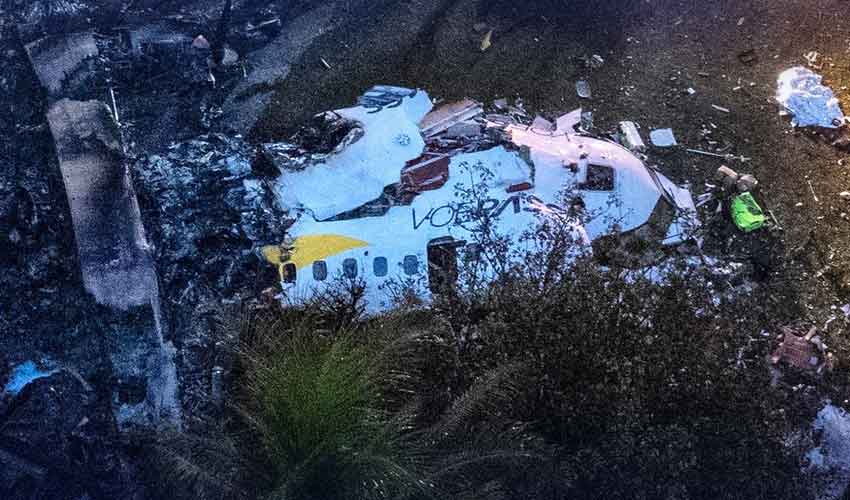A regional turboprop plane crashed into a residential neighborhood near Sao Paulo, Brazil, on Friday, killing all 61 people on board.
The aircraft, operated by regional carrier Voepass, was en route from Cascavel in the state of Paraná to São Paulo’s international airport when it went down in the town of Vinhedo around 1:30 p.m. (1630 GMT), approximately 80 km (50 miles) northwest of São Paulo.
Video footage shared on social media shows the ATR-72 aircraft spinning uncontrollably before descending behind a cluster of trees near homes, followed by a massive plume of black smoke. Eyewitness Daniel de Lima, a nearby resident, described hearing a loud noise before seeing the plane in a horizontal spiral. “It was rotating, but it wasn’t moving forward,” he told Reuters. “Then it fell out of the sky and exploded.”
Local officials reported that a home in a Vinhedo condominium complex was damaged when the plane crashed into its backyard, though no residents were injured. De Lima speculated that the pilot may have tried to avoid a more densely populated area nearby.
The plane’s unusual spinning motion before crashing has sparked interest among aviation experts, with some suggesting that ice buildup or engine failure could be to blame. However, investigators cautioned that it was too early to determine the cause of the crash. Voepass Chief Operations Officer Marcel Moura noted that ice was predicted at the plane’s altitude, but within acceptable limits. He added that the aircraft’s de-icing system, along with other systems, had been operational before takeoff.
Aviation engineer and crash investigator Celso Faria de Souza suggested that ice accumulation might have caused the plane to stall and spiral. He referenced past ATR-72 crashes, including one in 1994 in Indiana that killed 68 people and another in 2016 in Norway, where the pilot managed to regain control after ice buildup.
The plane’s “black box,” containing voice recordings and flight data, has been recovered, according to Marcelo Moreno, head of the Brazilian aviation accident investigation center Cenipa.
U.S. aviation safety experts, including Anthony Brickhouse and John Cox, indicated that investigators would examine factors such as weather conditions and the aircraft’s engines and controls. Cox noted that the plane experienced significant speed fluctuations before the crash, suggesting a catastrophic event may have occurred.
Initially, Voepass reported 62 people aboard the aircraft, but later confirmed that the plane was carrying 57 passengers and four crew members, all of whom had Brazilian-issued documents. Two individuals who missed the flight were interviewed by local media. Some passengers were reportedly doctors from Paraná traveling to a seminar, according to Governor Ratinho Junior.
Franco-Italian aircraft manufacturer ATR, jointly owned by Airbus and Leonardo, is the leading producer of regional turboprop planes. ATR stated that its specialists are actively engaged in the crash investigation. The plane’s engine, a PW127 produced by Pratt & Whitney Canada, is also under scrutiny, with its parent company RTX Corp offering assistance in the investigation. French, Canadian, and European investigators will participate in the inquiry, Moreno said.
This crash is Brazil’s deadliest since 2007, when 199 people lost their lives in a flight operated by TAM, which later merged with LAN to form LATAM Airlines.


